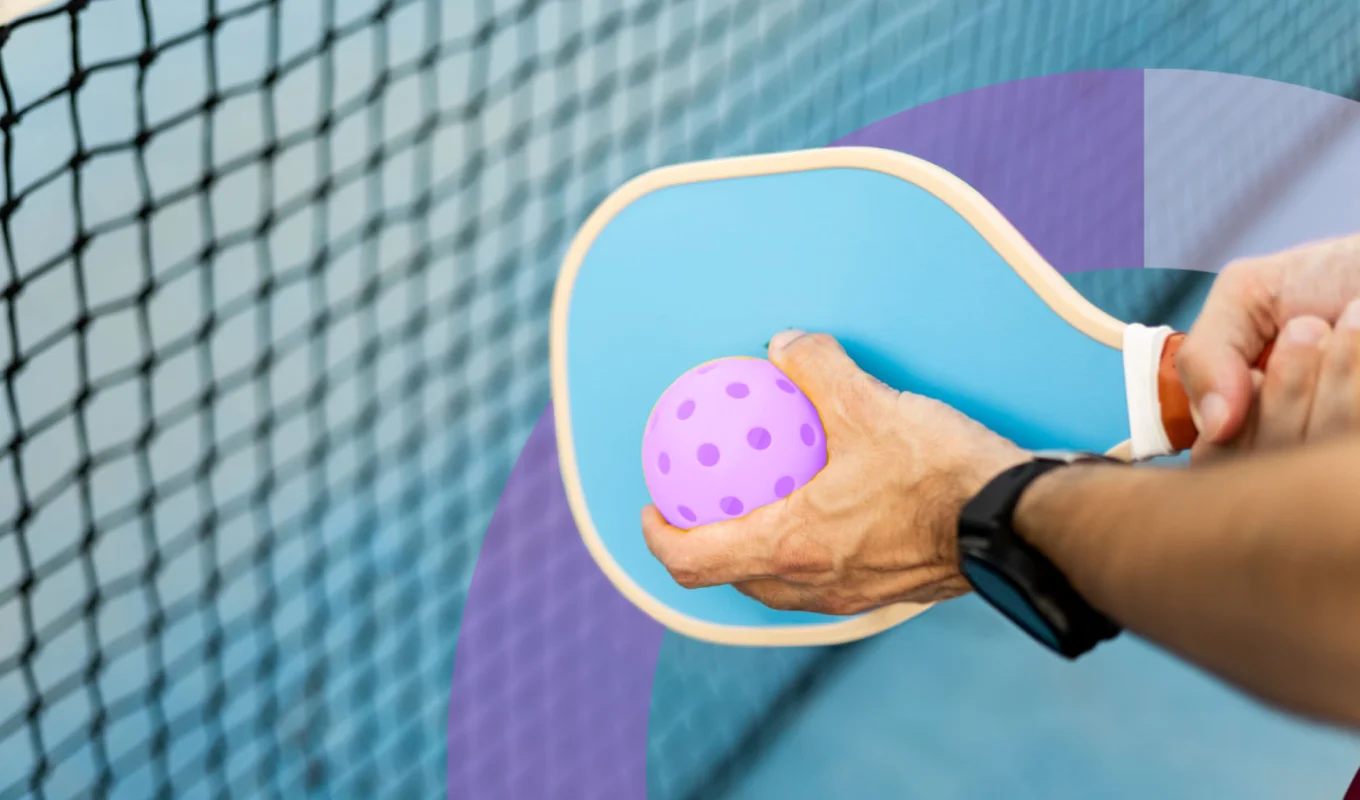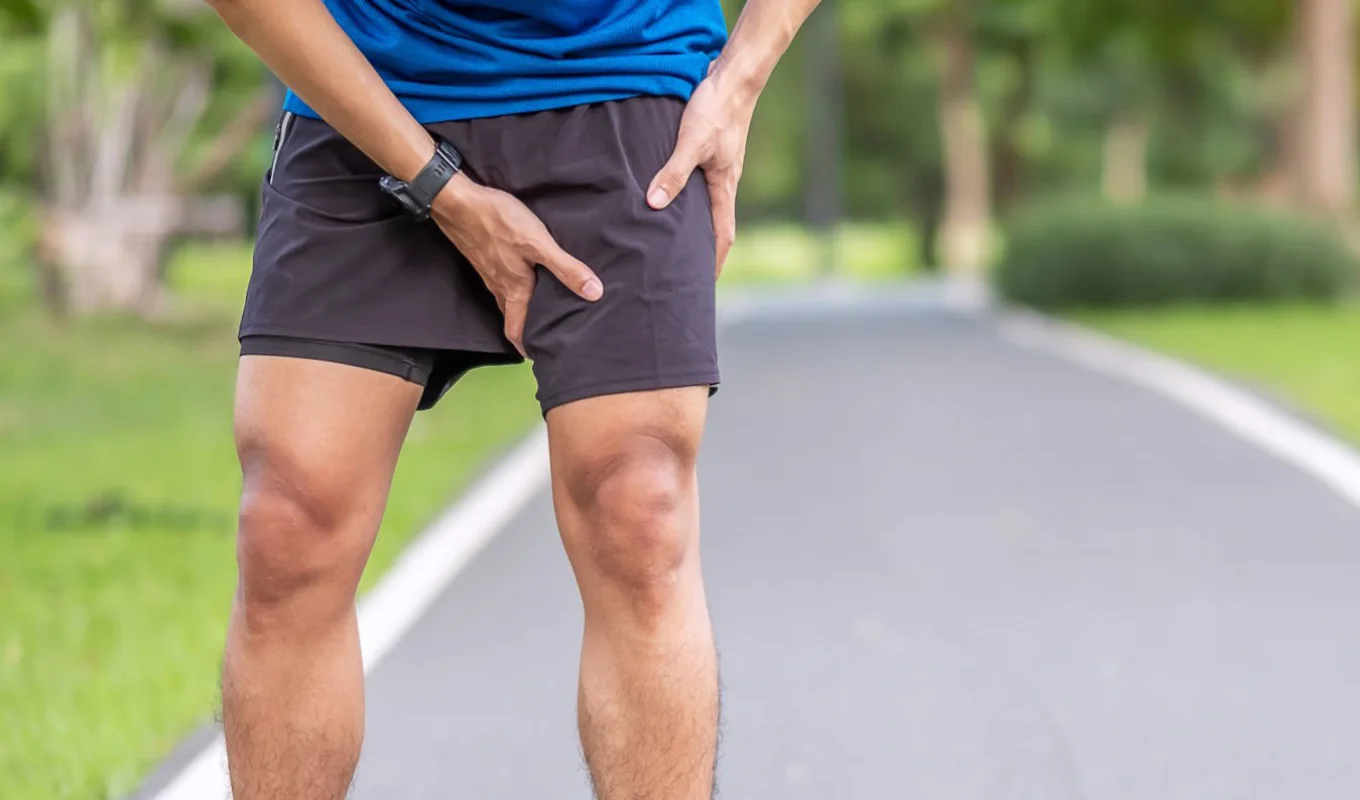Pickleball has grown at an impressive rate of 223.5%
over the last three years, but that growth is rivaled by the amount of injuries seen in the sport. According to a recent study over the course of 2017 to 2022, the rate of pickleball-related injuries rose faster than the growth of the popularity of the sport itself.
To better understand the common risks of the court, we’ve outlined the top five pickleball injuries. As a result of swinging your paddle and landing an effective dink, these injuries can sneak up on even the most seasoned players.
1. Strains
The hamstrings, knees, and wrists are particularly vulnerable to strains. These injuries can happen when you experience sudden, sharp movements or overuse.

- Warm Up Properly: Spend at least 10 minutes warming up before playing. Include dynamic stretches like leg swings and arm circles.
- Stretch Regularly: Incorporate static stretching into your post-game routine to keep your muscles flexible.
- Stay Hydrated: Proper hydration helps maintain muscle elasticity and reduces the risk of strains.
2. Sprains
The quick pace and frequent changes in direction make the ankles particularly prone to sprains, which results in stretching or tearing of your ligaments. The severity of a sprain can vary depending on the extent of the ligament damage. The different levels
include:
- Mild Sprain: Slight stretching and some damage to your ligament.
- Moderate Sprain: Partial tearing of the ligament with some joint instability.
- Severe Sprain: Complete tear of the ligament causing significant instability.

- Supportive Footwear: Wear shoes with good ankle support.
- Strengthen Your Ankles: Incorporate ankle-strengthening exercises like calf raises into your routine.
- Balance Exercises: Improve your balance with exercises such as standing on one leg.
3. Falls
Falls in pickleball can lead to a variety of injuries, including fractures and head trauma.
Good coordination and balance training help mitigate falls. Physical therapy is an excellent way to work with a professional on guided core balance and strength exercises,
especially as you age.

- Core Strength: Engage in exercises that strengthen your core, such as planks and Pilates.
- Balance Training: Practice balance exercises, like standing on one leg or using a balance board.
- Proper Footwear: Wear shoes with good grip to prevent slipping.
4. Tendonitis
Often referred to as “pickleball elbow” (lateral epicondylitis), tendonitis occurs when the tendons in your elbow are repeatedly
stressed. It can be avoided by using the proper equipment and regular exercise.

- Use Proper Equipment: Choose a quality racket that absorbs impact well to reduce strain on your arm.
- Regular Exercise: Strengthen the muscles around your forearm and elbow with exercises like wrist curls and reverse wrist curls.
- Technique: Ensure you are using proper techniques and not overextending your elbow.
5. Rotator Cuff Injuries
Your shoulder can suffer from overuse in pickleball, especially from overhead motions, which lead to inflammation or tears. The arm movements required to play pickleball can put stress on the muscles and tendons of the rotator cuff, leading to pain and limited range of motion.

- Shoulder-Strengthening Exercises: Incorporate exercises like shoulder presses and lateral raises.
- Proper Technique: Learn and use proper serving and hitting techniques.
- Avoid Overexertion: Take breaks and avoid playing through pain to prevent overuse.
Stay in Play with Physical Therapy for Pickleball Players
Listening to your body and addressing pain or discomfort early on is one of the most important things you can do to prevent a more severe injury, and physical therapy can make all the difference in keeping you on the court and enjoying the game you love.
With Luna’s in-home, outpatient care model, you can receive personalized treatment and guidance from the comfort of your home for a convenient and
effective physical therapy session.
If you want to continue playing the sport you love or are recovering from one of these common pickleball injuries, find a Luna Therapist near you and get back
to playing pickleball pain-free.









